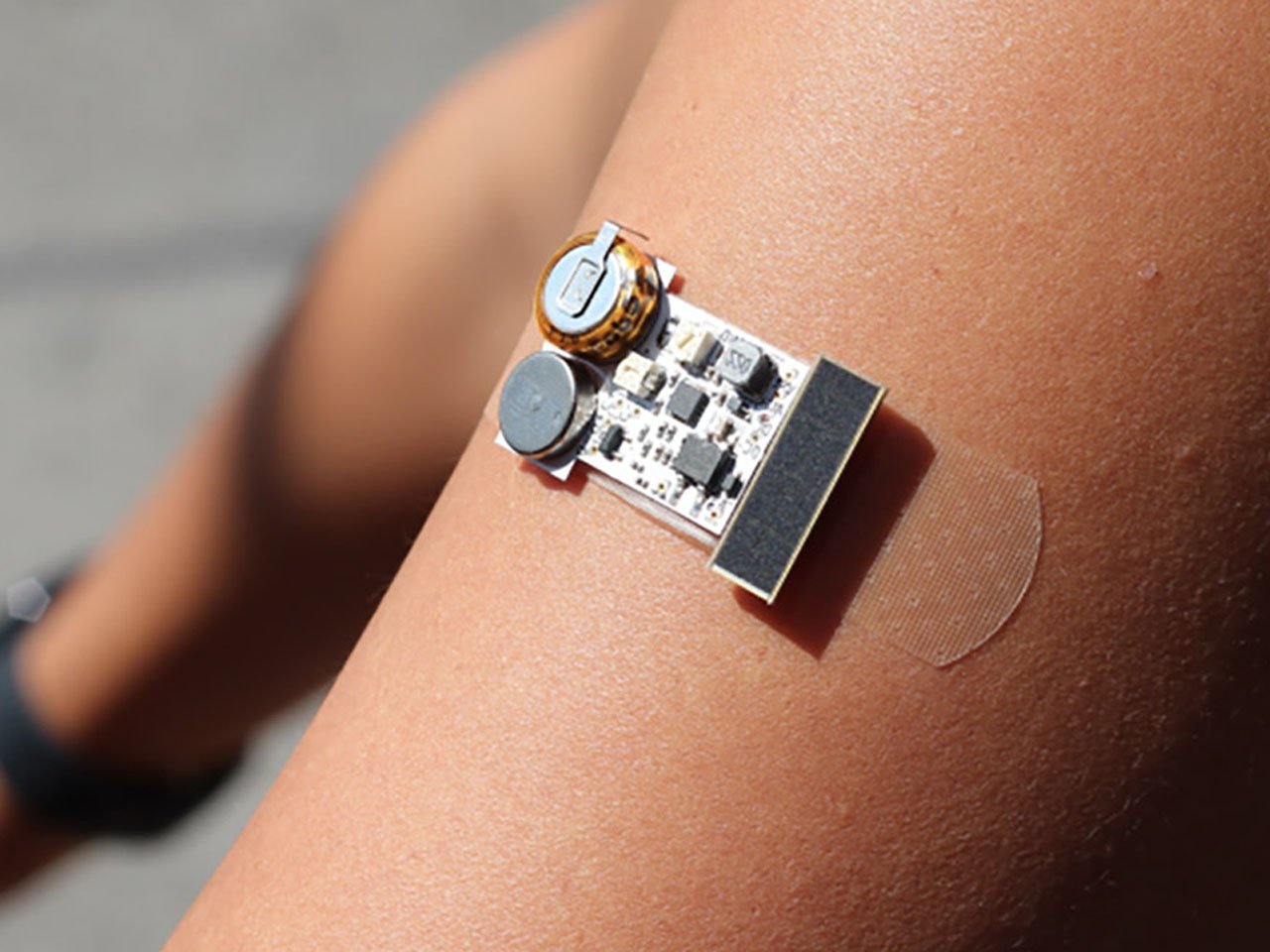Imagine stepping outside on a sunny afternoon and having your skin itself remind you when it’s time to find shade. That’s the simple yet futuristic vision behind a new wearable developed by researchers from Carnegie Mellon University and the University of California. Called Hapt-Aids, this thin, bandage-like patch uses sunlight not only as its power source but also as the very thing it measures, quietly tracking how long you’ve been under the sun and gently alerting you when it’s time to step back indoors.
The patch works through a flexible solar cell embedded in a soft, skin-safe adhesive layer. When sunlight hits the surface, the solar cell produces a small current that reflects the intensity of the light. By accumulating this energy, the system estimates total exposure time. Once a set limit is reached, the patch activates a haptic response, delivering a subtle vibration as a physical cue for the user. This interaction doesn’t require a display or smartphone connection, making the experience seamless and intuitive.
Designers: Carnegie Mellon University and University of California
Hapt-Aids is entirely self-powered, relying solely on harvested solar energy. This energy not only fuels its function but also serves as the key sensing element, allowing the device to monitor exposure without external power or recharging. Researchers describe it as a minimal, sustainable alternative to conventional wearables that often depend on batteries or wireless connections. The concept extends previous projects like ElectroDermis, an electronic bandage platform that explored soft, stretchable circuits for on-skin sensing and interaction.
In practical tests, the device demonstrated strong potential for accurately measuring light exposure and delivering timely feedback. Because it communicates through tactile sensations instead of screens or sounds, it remains discreet and accessible, even in outdoor settings where phone screens can be difficult to read. This simplicity could make it particularly useful for activities like sunbathing, outdoor work, or therapy sessions where safe exposure matters.
The patch’s flexible construction allows it to move with the skin, maintaining comfort and adhesion during normal physical activity. Its battery-free design enhances safety and sustainability by eliminating chemical components that might degrade or irritate the skin. However, challenges remain in ensuring consistent performance across varied conditions such as shifting light angles, different skin tones, and environmental humidity. The researchers also emphasize the need for reliable long-term adhesion and durability during repeated use.
Beyond sun exposure, the underlying concept of Hapt-Aids (energy harvesting as both a sensor and a power source) could open doors to broader biomedical and environmental applications. Future iterations might monitor hydration, UV radiation, or healing progress using similar principles. By turning ambient energy into both fuel and data, this approach moves wearable technology closer to complete autonomy.
Hapt-Aids is more than a sun sensor; it’s a glimpse into how the next generation of wearables might merge seamlessly with our skin. By transforming sunlight into both signal and power, this self-sustaining patch demonstrates that sometimes the most advanced technology feels almost invisible, quietly working in harmony with the human body.
The post This self-powered skin patch turns sunlight into a gentle tap when you’ve had enough UV first appeared on Yanko Design.

